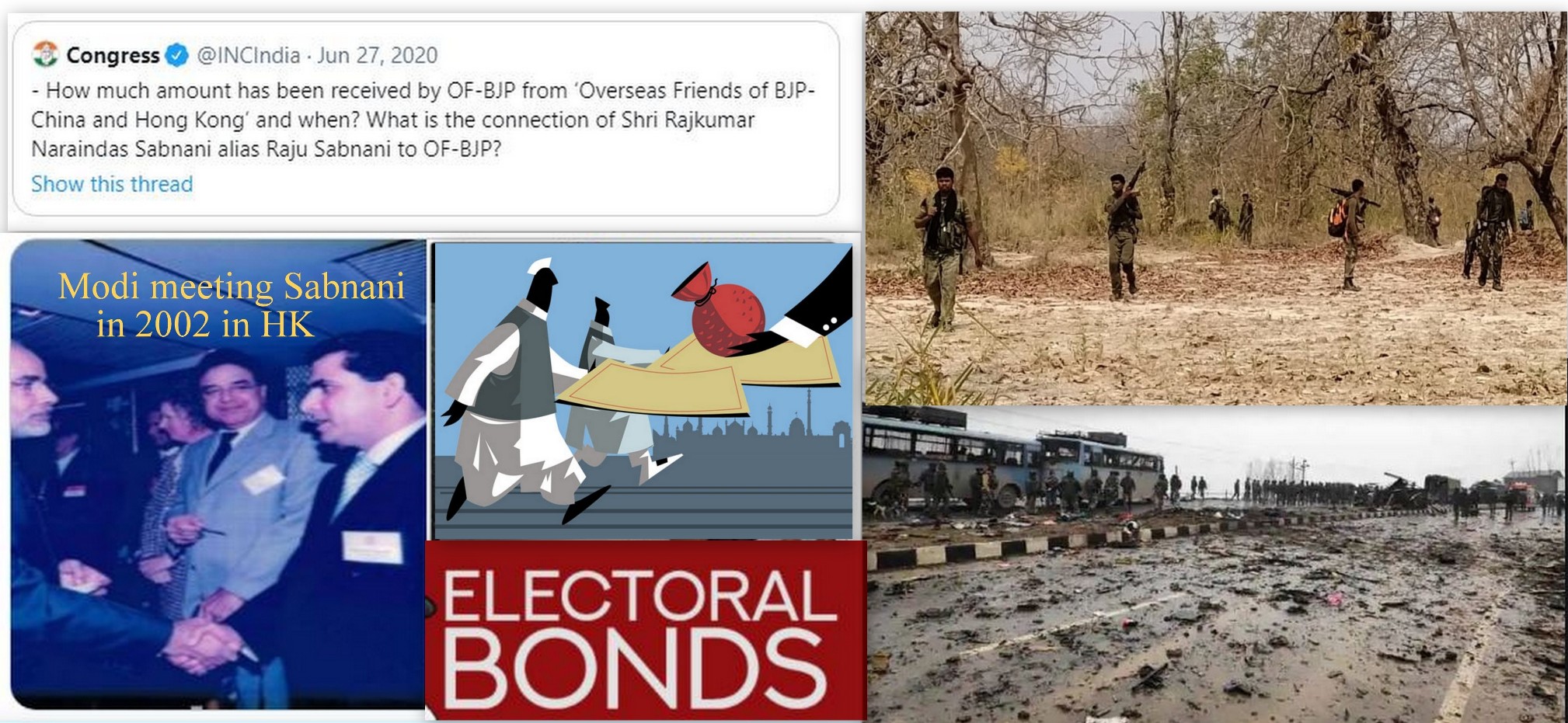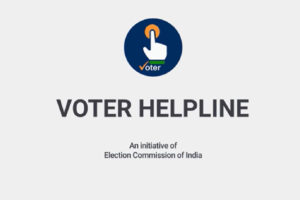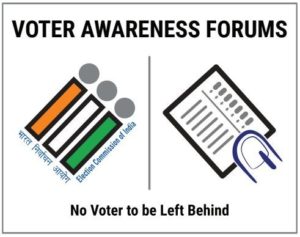When a party whose only agenda is total control of the narrative being sold to the public & to hold over the power, it is foolish to think that it will not bend the rules of games like transparency in its favour. It comes along with the party’s necessity to control the story being peddled about its intention through the media or rather Godi-media as Magsaysay award-winning journalist, Ravish Kumar describes it. Such a party would silently support gangs running on the streets of the country who will hammer any voice of dissent and will label any opposing voice as anti-national as if nationalism is its medieval feudal right. This type of parties would also vouch for bygone practices like prima-nocta to rape the very ideas of democracy, debate and differences within the national forums and platforms.
Also Read: Death of Congress Spokesperson-Mockery of the debate discourse
Political parties act as rational utility maximizers, where the ultimate desirable utility for them is staying in power as long as possible. BJP is formed of the leaders most of whom are intellectually insolvent and loud-mouthed, the supporters who are fanatically ardent, the toiling workers (read the two-rupees a tweet blokes) and the ground-level cadres (read the various senas), forming a society in itself. How a party like BJP, operates in post-2014 India can be better described through Max Weber’s three-factor theory of stratification. The three factors of power distribution are power, prestige, and wealth or class. Power is the ability to attain the goal (electoral victory) despite opposition. The prestige or the status is the appeal of the party in the eyes of the electorate, which BJP tries to manage through Social media and rabble-rousing over religious identities & polarization. And, the wealth is self-explanatory, meaning in essence, how much money the party has in its coffers to maintain its allure infront of the public or the voters.
Under the garb of nationalism and low-level terror, (as highlighted by an international author), the party has the record of sending its student wings into university-hostels on a rampage and mowing & trampling down migrant-labourers who were left with no resources in cities far away from their homes when the pandemic struck. The party also has a misplaced sense of self-righteousness with which it communicates with its voters and the members of the opposition parties in the parliament. Managing its image in this direction has become relatively difficult for the saffron-party over past few months, especially because of the ongoing farmers’ protests and questioning of its methods of suppressing dissent and bending constitutionality of structures.
The recent problem, more correctly, a bunch of thorns in the neck for BJP, has been a damaged image, the exacerbating metrics of India in factors like GHI, contributing to global poverty & the unanswerable questions it is facing in the run-up to elections in four states and Puducherry. But, there have been some parallel developments over the past few years which seem disconnected, but have a subtle layer of connections among them.
Attacks on security forces
These days, when the assembly election is underway in two states and will begin in two more, Chattisgarh witnessed an attack on security forces. In Sukma-Bijapur border, an attack took place on CRPF units, especially CoBRA units & DRG units, which led to 22 deaths and injuries to the security personnel. An official in CRPF stated that around 25-30 Maoists were also killed though the exact number is yet to be ascertained. In an interview, with India Today on March 02, Prashant Kishor had stated that numbers in West Bengal election can fluctuate if an attack on security forces takes place, a part of which has surprisingly come true. Does it ring a bell??
When we wind the clocks back to early 2019, we find that just a few months prior to LS-polls, Pulwama attack carried out by JeM, claimed the lives of 40 CRPF personnel and injured 35 others. After the Pulwama attack, in a chat with Partho Dasgupta, Arnab Goswami had stated that the attack would help BJP play out something which would please the public, alluding to the electoral capital which BJP derived from the attack, resulting in its subsequent victory in the 2019 LS polls.
Also See: Fallout of WhatsApp chat revelations-TRP scam was just a part
With connection to the recent attack at Sukma-Bijapur, an important past development must be underscored. In June 2020, BJP’s district unit (Chattisgarh) vice-president Jagat Pujari was arrested for supplying tractors to Maoists. In that case, the police had found out that Pujari had been facilitating supply of goods and other amenities to the Maoists for a decade. Who knows for sure how many more Jagat Pujaris are there in BJP? If at all they do exist, what have they been upto in the current election-season, when the party is looking for face-saver in the fallout of the decimated economy, Covid induced lockdown, assault on students, rapes of women in BJP-ruled states and the farmers’ protests.
Also Read: Dystopia 2020
Though BJP has publicly condemned attacks by Maoists like every other political party in India do, it is an open secret that none of the political parties can claim to have been washed & wiped clean with holy water, with no muck in its character. Each has some amount of dirt on its hands. But, the saffron party, and especially its leaders are known to use such attacks for their benefits in upcoming elections at state and national levels. After the Pulwama attack, BJP had brazenly gone ahead and pleaded for votes in the name of the fallen soldiers, which was castigated by Congress leaders. The Election Commission of India had turned deaf ears & blind eyes towards the requests from the INC leaders to restraint BJP from using the Pulwama attack to ask for votes.
Overseas friend
We will now widen our lens of observation and analysis on a global scale. In an investigation carried out by RTI activist Saket Gokhale, it was found that Rajkumar Naraindas Sabnani alias Raju Sabnani is a person with connections in India and China, a known source of support for the LWE-problem in India. Raju Sabnani is infact the Vice-President of Overseas Friends of BJP (OF-BJP) for China and Hong Kong, as found out by Gokhale. Sabnani is a former terror accused who was arrested in Paraguay for supplying money & weapons to Lebanese terror outfit-Hezbollah. In this regard, Congress had asked in June 2020 (note the month), over Twitter, “how much money was received by the OF-BJP from the overseas friends of BJP in China and Hong Kong & when was the money received.”
Saket Gokhale had found out that Sabnani handles the financing & campaigning for BJP from China & Hong Kong. He also posted a pic on Twitter disclosing that Modi had met Sabnani in Hong Kong in 2002, the same year when Sabnani was arrested for terror charges. (That was coincidentally also the year of the Gujarat riots.) As per a US government report, Sabnani was a close associate of the terror outfit Hezbollah’s Treasurer Assad Ahmed Barakat & was in-charge of raising funds for him. In the report dug out by Gokhale, Sabnani was alleged to be serving as a middleman for fund-raising between Hong Kong mafia & Hezbollah. The report also stated that Sabnani was a close contact for Assad Barakat, Treasurer & Head of military operations in South America & had received US$ 200,000 for his help everyday. In 2002, when Modi had met Sabnani in HK, Paraguay police had raided Sabnani’s house & had found bomb-making materials, a fax order for AK-47 rifles with Sabnani’s name on it & the authorization to use US$ 30 million to trade in arms. Without devolving into digression, we will later reconnect this story with our story of attacks in India just around the time when some elections are about to go underway (like the 2019 LS polls) & two already underway in Assam and West Bengal.
This narrative of VP of-BJP in Hong Kong is connected to the place being a heartland of the last remaining China’s band of dissidents. The place might be visually a stronghold of capitalism, but it is also probably the last holdout of the Chinese dissidents, who are the self-proclaimed supporters of Mao Zedong’s cause & staunch opponents of market economics. This group of dissidents is keeping the flame of Maoism alive in public there. They also cherish the Cultural revolution of 1966, which had purged the symbols, ideas, and traces of the Chinese past & the remaining facets of nubile capitalism taking shape around the world present in China & had sought to implant the Maoism into the Chinese psyche. Ideologically, this group is on the same plane as the LWE groups in India, which are known to get money, arms, and ammunition from China. The stockpile of arms with the LWE groups is astounding, given a survivor of the 2010 Dantewada attack had stated that the Maoists were assaulting the CRPF troops with AK-47, INSAS, LMGs, SLRs, and other arms. Neither does so much variety of arms and ammunitions come for free, nor the ideology alone can guarantee their access. Even the Maoists need money for these essentials in their war against capitalism. CPI(Maoist), a prominent LWE group in India is known to have links, including financial types, with Maoist organizations in countries like Turkey, and Philippines other than China. In a place like HK, it would not be impossible for a person to gather money and resources and funnel them to a major political party in India, just prior to election season using the financial tool of electoral bond.
Oversight-immune Electoral bonds
The tool of Electoral bond forms another crucial component of the overall plot here. The bond has to do with the way any person or corporation in the country (or abroad) can donate funds to any political party in India. While heralding the electoral bond in the Indian political economy, the provision of the existing limit of Rs 20000 on anonymous donation as per Section 23 of the Representation of the People Act (RPA) had been left untouched. There was and is no requirement to disclose a contribution by cheque or digital transfer up to ₹20,000. There was and is no limit to how much a party can receive from anonymous donations. More importantly, there was and is no limit to how much on an overall basis a party can receive in cash from all sources put together. The limit on cash donation kept at Rs 2000 is just a red herring for the uninformed, ignorant, gullible, weak-minded, and morally pliable party-supporters among the public.
Prior to the introduction of electoral bond, the political party’s accountant had to covert, say, an amount of ₹1000 crore into smaller manageable units which can be put into books. He had to make sure that the entire amount was broken down into entries of ₹20,000 or below. Now the party will absorb the same amount by breaking it down into entries of ₹2,000 or below. All that the new law would ensure is more book entries. Otherwise, it would be business as usual.
Once purchased, the electoral bonds will be like bearer bonds and will not contain the name of the eventual beneficiary. The Income Tax authorities and Election Commission of India would not know anything about reporting of donor, beneficiary, or even the amount of contribution. That has been exempted by amending the Income Tax Act Section 13A (b) and the RPA, Section 29C. The provision of Representation of the People Act Section 29-C allowed parties not to declare the name of donors who contribute less than Rs 20,000. The net effect of the electoral bond and indeed the purpose, of the bonds, or legal hawala to say the least, will be that no one except the fund giver and the fund receiver would know about this exchange done in white money with full tax exemption.
Prior to 2017, Section 182 of the Companies Act, 2013, mandated that a company can donate only up to 7.5% of its average profit of the last three years, and must disclose this amount and the beneficiary political party. After the introduction of electoral bonds, there is no limit to the amount that companies can donate, and the requirement for such firms to have existed for the last three years on a profit-making basis has also been deleted. The implication is that even loss-making companies or shell companies can be used to purchase electoral bonds. Hence, essentially, corporations in existence for less than three years, like shell companies, post-box companies or individuals can now funnel unlimited amounts to a political party through electoral bonds, anonymously. The electoral bond has put a blindfold on the eyes of the tax authorities. Under Section 13A of the IT Act, companies contributing through electoral bonds will not even be required to keep records of such donations, and if no records are mandatorily maintainable, no questions can presumably be asked by Income Tax authorities. The Representation of the People Act has been amended to exempt parties to inform ECI of any amount received above Rs 2,000, if made through electoral bonds.
What many people and observers missed during the introduction of the electoral bonds is that the Foreign Contribution Regulation Act, 2010 has been amended to exempt from scrutiny foreign funds received by political parties with retrospective effect from 1976. In 2014, Delhi High court had indicted both INC & BJP for receiving foreign funds from Vedanta & its subsidiaries in violation of the FCRA 2010. To counter this, government led by BJP amended the FCRA Act itself, and exempted from scrutiny all foreign funding to parties retrospectively from 1976. Furthermore, the amended Companies Act now allows any foreign company registered in India to make contributions through bonds to political parties, overruling legitimate doubts about who or where its real owners are, or what its source of funding is.
The result of these changes is a complete financial opacity, which would benefit only one party, ie BJP, to help it channel unlimited money through international routes into its party coffers. To clarify the uniqueness of the advantage to BJP, one must understand that now essentially BJP can finger in the workings of the Ministry of Finance. It can ask for diligence-reports on the deposit-holders of other parties, have the banks issue STRs, make the FIU generate alibi, all with the intent to coerce the opposition. There are also obfuscating structures like Monetary policy committee, which allow GOI led by BJP to meddle in the banking affairs. In matters related to political funding, Election Commission of India cannot name the donors, the IT department, even if questioned under the RTI Act, can claim confidentiality granted to assessees, and the foreign donors like possibly Raju Sabnani cannot be put under scrutiny & identified, thanks to the amended FCRA.
Hence, BJP, the party presently in power has an overseas friend, who, it would be naïve to think would not have access to the electoral bonds, an oversight-immune pathway of funneling money into the country. Pathways like Electoral bonds allow for topping up the coffers of the patronage parties whenever the bonds are open for subscription & whenever the political climate in the country demands for it, like in the run-up to election-season, when they need to buy fence-seating turncoats from other parties. Financing from such bonds also can help them to prop up people like Jagat Pujari, just in the nick of time to manage public perception & to divert the overall attention.
In this election season, the MPs, MLAs, and candidates of the saffron party are facing an uphill task of managing its damaged public perception, appeal, and image after the mismanaged and unplanned lockdown triggered by Covid19 which is on a resurge, the crackdown on students, the farmers’ protests where it is batting for its crony friends. In this situation, it would be desperate to use any means necessary to impact the voting in the four states and the UT of Puducherry.
An avid, smart and most importantly an unbiased observer would easily connect the dots to make sense of the big picture, all the components given.





